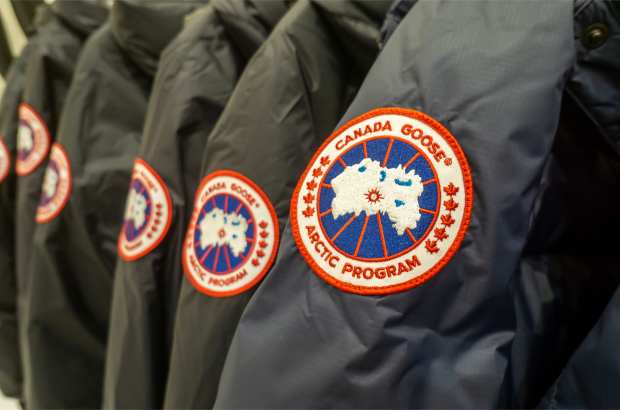How Retailers Are Bundling Up With Experiential Concepts

Usually earnings reports are fairly predictable and boring affairs. Revenue, expenses, competitive threats and then the reason to be optimistic. Outerwear firm Canada Goose takes things a little further. The company’s last earnings statement had the usual information. But, wait. Right there in the paragraph with the Q3 spike in Asian sales and other achievements is something different.
What Canada Goose did was invest in its North American sales by encouraging consumers to stress-test their current jacket and consider a new one even though the inventory for their obvious suggestion wasn’t front and center. Instead, Canada Goose went for experiential retail, a strategy that has become more important as consumers want to do things when they buy things.
In this case, over 8,000 consumers traveled through “The Journey,” an experiential retail concept in Toronto during the December 2019 holiday shopping season. It was created ostensibly to promote its new Toronto store. The Journey had no inventory. Consumers purchased from a digital kiosk. How do you get to The Journey? You walk across a fake snow-packed crevasse to a cold room where real snow drops in -20 degree weather. There, for as long as you can stand the cold in your non-Canada Goose jacket, you can watch AR films that change with the season and view huge screens with Arctic displays.
The store is divided into various rooms. A cold room with real snow will drop to -12 degrees Celsius and “immersive storytelling” changes with the seasons. The actual jackets, which the firm hopes the immersed consumer now can’t live without, are displayed through hotspots on the jacket that trigger a screen with product information. The company liked the opportunity for experiential retail as a platform for storytelling, immersive engagement and a tip of the fur-lined hat toward retail evolution.
“With the retail landscape changing so much these days — as we all know e-commerce [is] becoming more important — we want to be a leader and be at the forefront of that,” Canada Goose CEO Dani Reiss told Refinery29. “The mandate for this store was to create something that’s never been done before.”
Experiential Retail Expands
And retailers are hearing the same mandate. High-end home design retailer SHOWFIELDS is making its experience strategy more integrated and permanent. It’s new Miami location is all about experiencing Miami. It has a speakeasy bar, a theater for live performances, piercing stations, tattoo parlors, art installations, a glass stairwell, glass skylight and a storefront facade. And, oh yes, cool products to design the home.
“Miami is a city on the rise and we are thrilled to be part of this incredible ecosystem,” said SHOWFIELDS Co-Founder and Chief Real Estate Officer Amir Zwickel. “We are excited by the crossover of both our existing NYC customers and an international audience that may not have the exposure to the brands that we currently showcase.”
Then there’s Spavia. The ultra-high-end spa launched a new retail brand last week called Sway. It is unashamedly aimed at millennials. “From the moment millennials and urbanites walk through the door, they will relax and interact in the multi-sensory experience,” the company says. Sway includes live plant walls, swings, murals, and pods for quick massages and facials.
The experiential retail concept has developed with some urgency since destination retail spots like malls search for reasons for consumers to make the trip, and if they won’t spend a lot of money, they will spend time. As one example, The Westchester in White Plains, New York is one of those malls that has huge anchor tenants, access only by highway and an upscale clientele. In other words, it’s vulnerable. However, just a long putt away from Neiman Marcus, you can play virtual golf, drink beer and buy golf products. Makes a family trip to the mall more engaging, according to Golf Lounge 18 CEO Ajay Gautum. He believes the mall benefits as much as his company does.
Adding an experience “changes the whole dynamics” of the mall, he said. “I’m a golfer, I love to be more on a golf course than in a shopping mall and believe me being convinced to bring it into the shopping mall was one of the biggest decisions but I think we got it right.”
Other notable experiential disciples include Lululemon (in-store yoga), Macy’s (fitness classes in conjunction with Nike), REI (field classes in kayaking, hiking and rock climbing) and Whole Foods and Williams-Sonoma (in-store cooking classes).
“Since the U.S. financial crisis of 2008, consumers have been driven to make purchases ‘count.’ Americans today take less pride in having stuff, and they take more pride in doing stuff . . . particularly stuff that can be done with friends and family and shared through social media. (Just consider the rise of Tough MUDder races, selfie sticks, and GoPro cameras.),” says an experiential retail report from the NPD Group. “Just as important, consumers have learned that in a digital economy there’s less of a need to own things, particularly brand-new, expensive things. The sharing economy means when you want to travel you can order a car on demand (Uber, Zip Car), borrow a bike for an hour (Citi bike), or nab a place to park at the airport (Just Park, Flight Car).”
The experience economy can meet experiential retail. For department stores and malls they live in, it might not save the day. But it sure won’t hurt.
